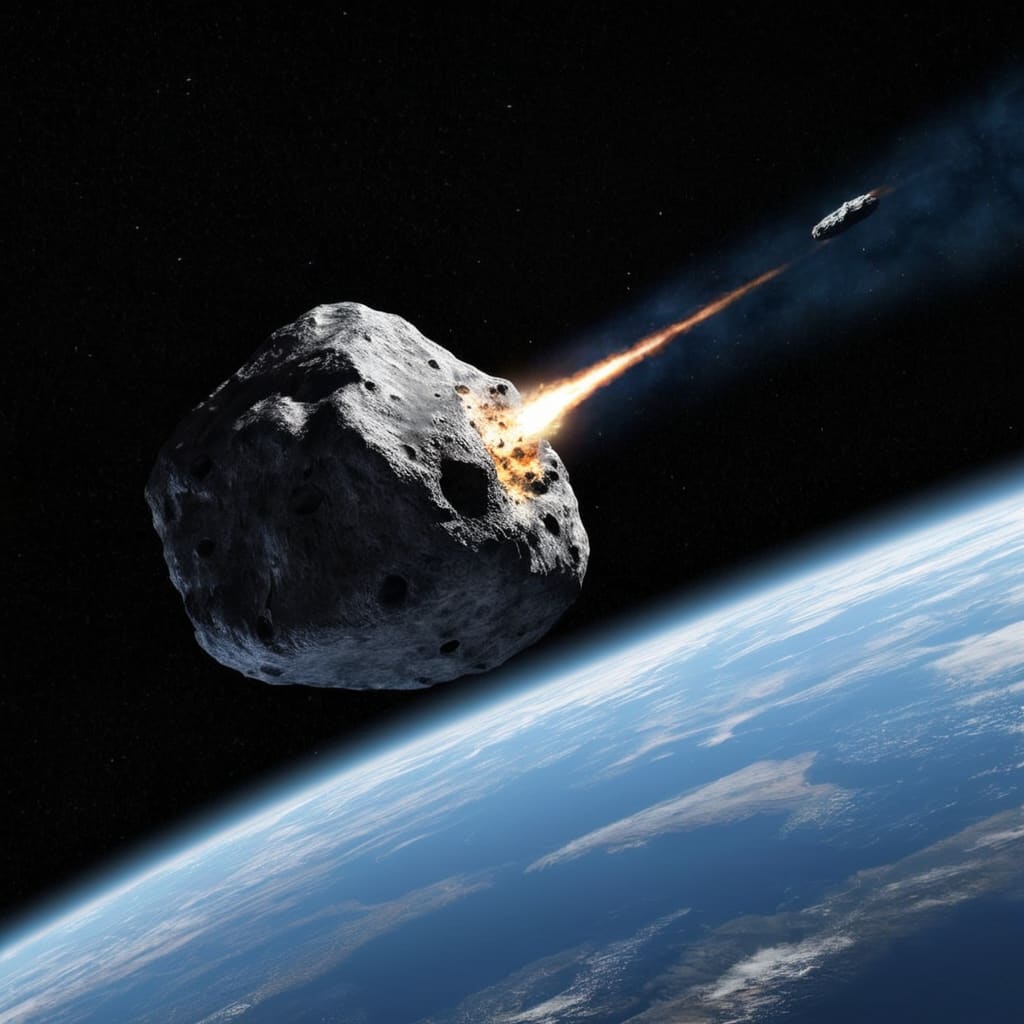The Shadow of the Sky
An Asteroid Larger Than the Great Pyramid Races Towards Earth

The silence of the cosmos, once a comforting blanket, now hummed with an unsettling tension. Telescopes across the globe, once trained on distant nebulae and shimmering galaxies, now pointed towards a single, menacing point in the sky. A celestial body, a cosmic bullet of rock and ice, was hurtling towards Earth. It wasn't a small, insignificant pebble, but a behemoth larger than the Great Pyramid of Giza, a monument to destruction barreling down on our planet.
The initial discovery was made by the Panoramic Survey Telescope and Rapid Response System (Pan-STARRS), a Hawaii-based observatory dedicated to scanning the heavens for near-Earth objects. The date: August 12, 2023. The designation: 2023-GX1.
The initial readings were alarming. The asteroid, a rocky behemoth measuring approximately 140 meters across, was hurtling towards Earth at a staggering speed, approaching from the direction of the sun, making it difficult to track accurately. This lack of visibility was the first unsettling factor. The second, and perhaps more terrifying, was the projected impact date: September 15, 2023, a mere month away.
The news reached the public like a shockwave. Images of the looming asteroid, a blurry, ominous blob against the star-strewn blackness, filled television screens and social media feeds. The internet erupted in a symphony of fear, anxiety, and disbelief. Governments, caught off guard, sprang into action, scrambling to implement emergency plans and coordinate global responses.
The world watched in morbid fascination as the clock ticked down. Scientists frantically studied 2023-GX1, trying to piece together its composition, trajectory, and potential impact zones. The sheer size of the asteroid, larger than any known object to have hit Earth in recent history, made the situation unprecedented. The impact was guaranteed, the only question was where.
The possibility of a direct hit on a major city, causing unimaginable devastation and loss of life, sent shivers down spines around the world. Scientists warned of tsunamis, earthquakes, and volcanic eruptions triggered by the impact, potentially triggering a global cascade of disasters.
The global response was a mosaic of fear, defiance, and desperation. Millions sought refuge in underground bunkers, while others turned to prayer, hoping for a miracle. Governments poured resources into hastily devised defenses, hoping to deflect the asteroid or at least mitigate the impact.
The most ambitious plan, code-named “Project Guardian,” involved deploying a nuclear warhead to detonate near the asteroid, breaking it into smaller, less devastating fragments. The plan was fraught with danger, carrying the risk of inadvertently creating a shower of radioactive debris. Yet, with time running out, it was the only viable option.
The world held its breath as the launch date arrived. A powerful rocket, bristling with advanced technology, ascended from a specially constructed launch site in the Nevada desert, carrying the nuclear payload. The launch was a nail-biting success, and the world anxiously watched as the rocket chased its target across the vastness of space.
The final moments were a blur of anxious anticipation. The world held its breath as the detonation occurred. The impact was recorded by telescopes around the world, a brilliant flash of light followed by a shockwave that rippled through the cosmos. The world erupted in a collective sigh of relief, the asteroid shattered, its fragments scattered across space, their trajectory altered.
But the danger was not over. The fragmented asteroid, though significantly smaller, was still a threat. Some fragments, large enough to cause regional damage, were still on course for Earth. The threat remained, though the immediate danger had passed.
The world, battered but unbroken, was left to grapple with the aftermath. The shadow of the sky had passed, but the memory of its menace lingered. The event served as a stark reminder of our vulnerability, the fragility of our planet, and the unpredictable nature of the cosmos.
The experience forged a new global unity, a shared understanding of our collective vulnerability. It led to renewed investment in space exploration, asteroid detection technology, and planetary defense initiatives. The world had learned a hard lesson, and the threat of the sky was forever etched into our collective memory. The event left a legacy of caution and vigilance, a reminder that even in the face of cosmic threats, humanity could rise to the challenge, proving its resilience and ingenuity.
About the Creator
Nora SG
I love writing articles, poetry and children's stories, which I sell on Amazon, I also design images, especially on artificial intelligence programs, and I sell on several sites, and I have 5 years of experience
Enjoyed the story? Support the Creator.
Subscribe for free to receive all their stories in your feed. You could also pledge your support or give them a one-off tip, letting them know you appreciate their work.






Comments
There are no comments for this story
Be the first to respond and start the conversation.